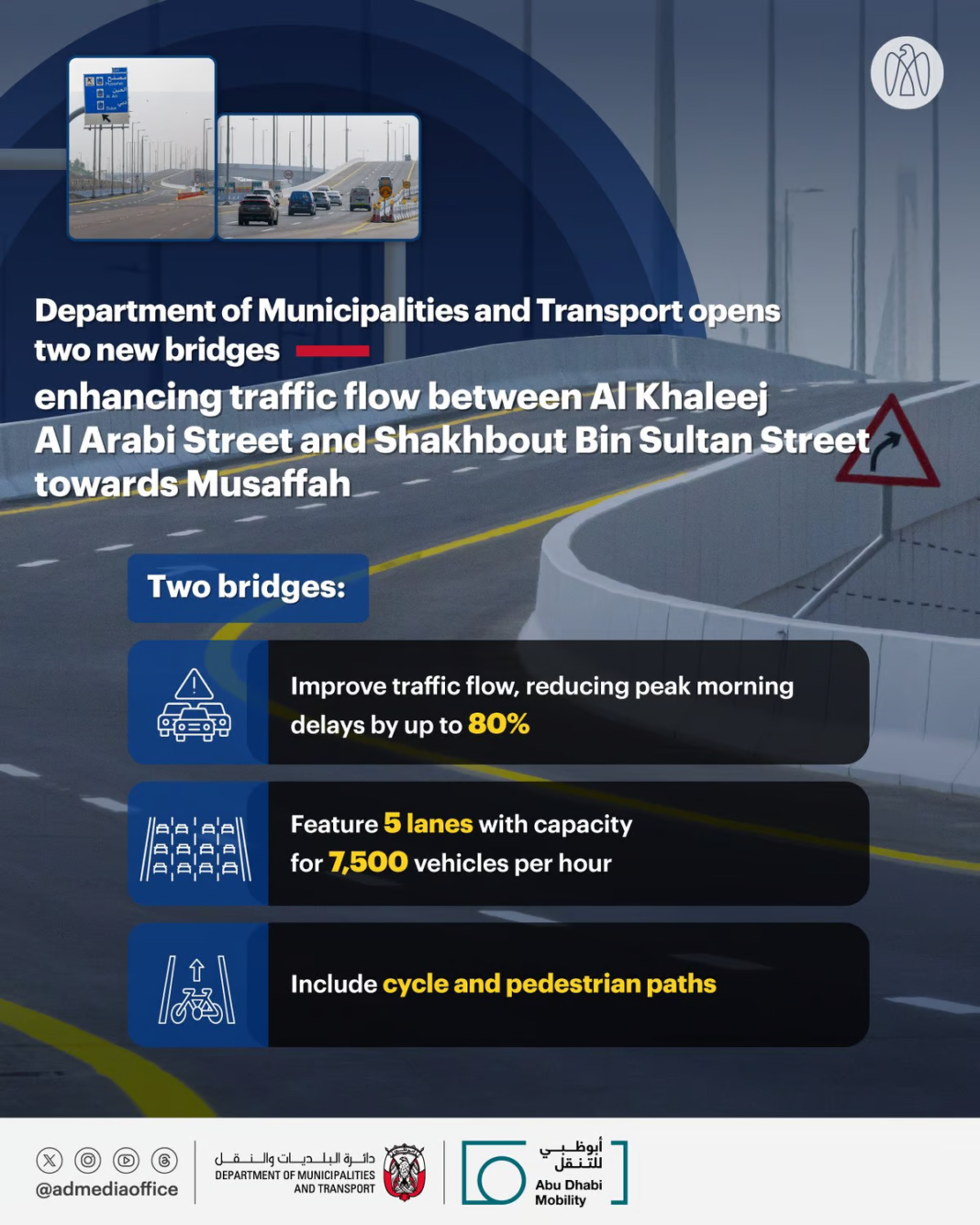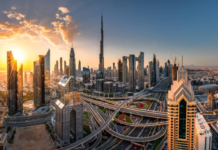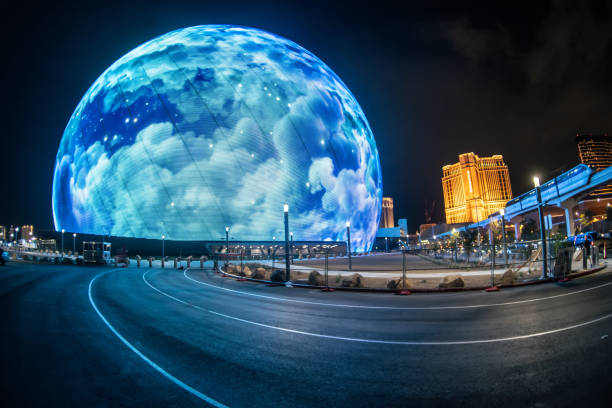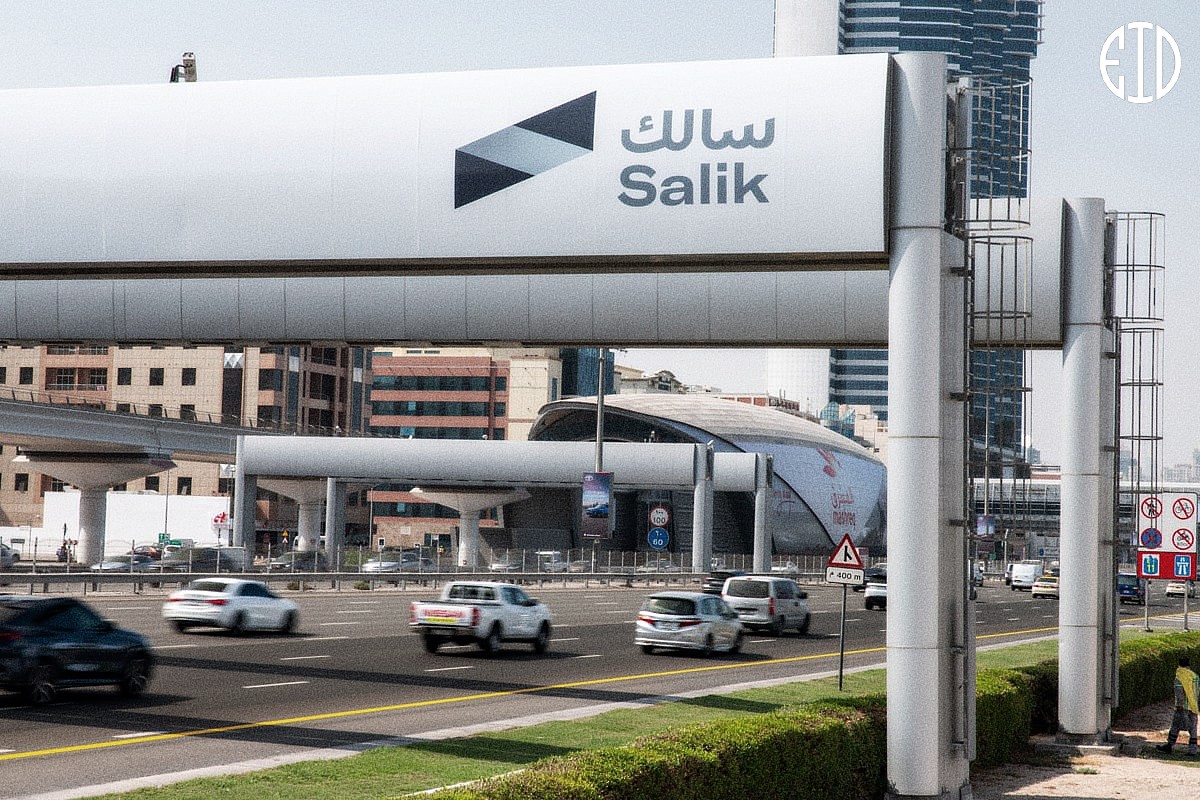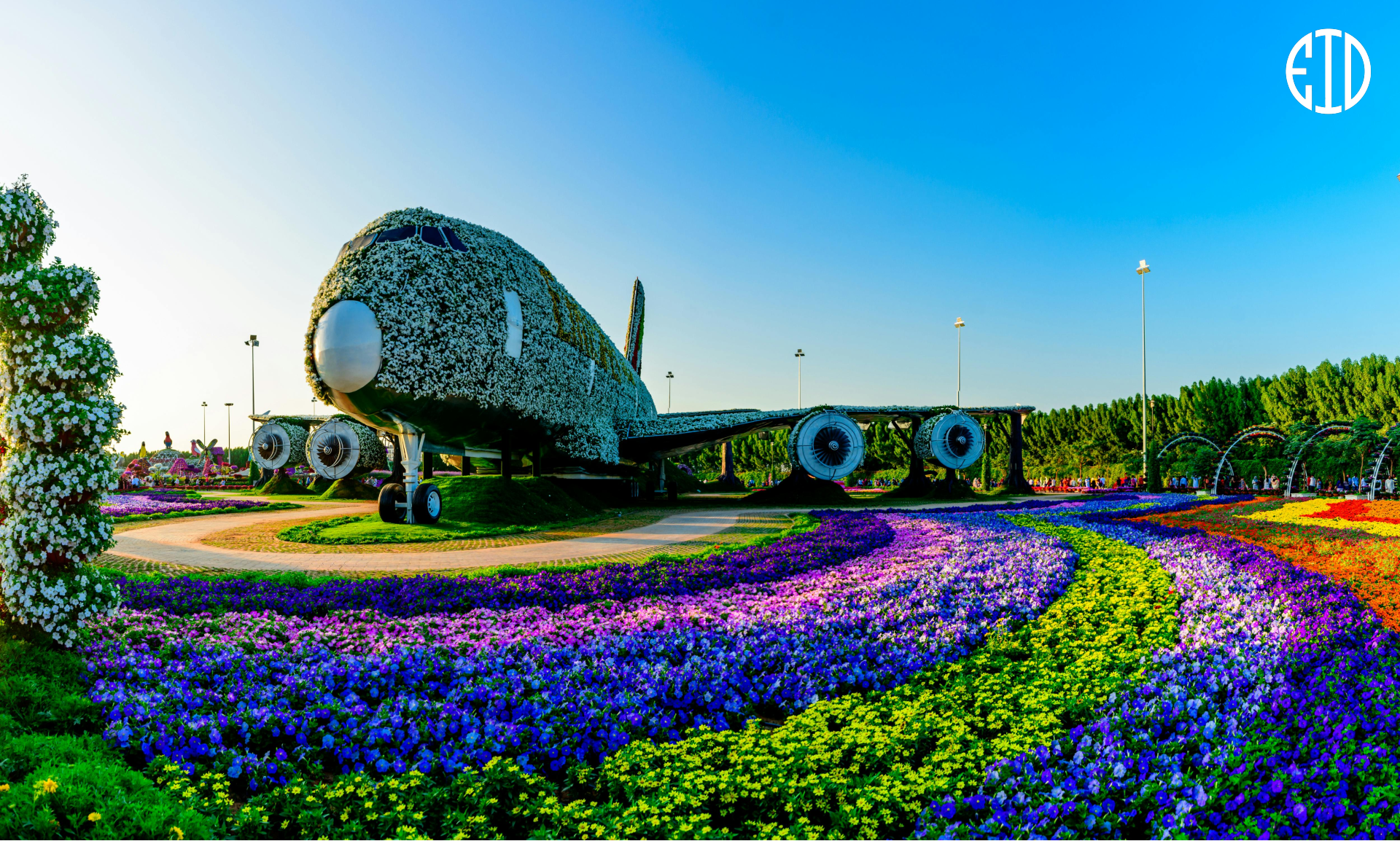Abu Dhabi has opened two new bridges that significantly enhance traffic flow, reducing peak morning hour delays by up to 80%. The project, developed by the Department of Municipalities and Transport (DMT) in collaboration with the Integrated Transport Centre, connects Al Khaleej Al Arabi Street and Shakhbout Bin Sultan Street towards Musaffah.
Key Features of the New Bridges
- Infrastructure Investment: The AED 315 million project includes a three-lane flyover on Al Khaleej Al Arabi Street and a two-lane bridge linking Shakhbout Bin Sultan Street to Al Khaleej Al Arabi Street.
- Capacity and Efficiency: Each bridge features five lanes, accommodating 7,500 vehicles per hour, which is crucial for easing congestion during peak hours.
- Sustainable Transportation: The bridges include dedicated pedestrian and cyclist paths, promoting eco-friendly travel options.
- Comprehensive Upgrades: The project also involved landscaping improvements across 46,000 m² and the installation of 61 streetlights to enhance the area’s aesthetics and safety.
Construction Achievements
The construction utilized over 15,354 m³ of concrete and achieved a remarkable safety record with over 3 million safe man-hours and zero lost time incidents (LTI). The new infrastructure spans 742 meters, with ramps supported by 12 piers, ensuring robust structural integrity.
Benefits for Commuters
The upgraded intersection will significantly benefit commuters traveling to key locations such as Zayed International Airport, Musaffah, and Hudayriyat Island. Mohamed Ali Al Shorafa, Chairman of DMT, emphasized that this infrastructure aims to improve connectivity and enhance the quality of life in Abu Dhabi.
Future Developments
The project sets the stage for further enhancements in Abu Dhabi’s transportation network. Plans for an underpass are already in the works to accommodate future growth and evolving transportation needs.
Conclusion
With these new bridges, Abu Dhabi takes a significant step toward modernizing its infrastructure. This initiative not only alleviates traffic congestion but also aligns with the city’s vision for sustainable urban development as it prepares for a transformative year in 2025.


